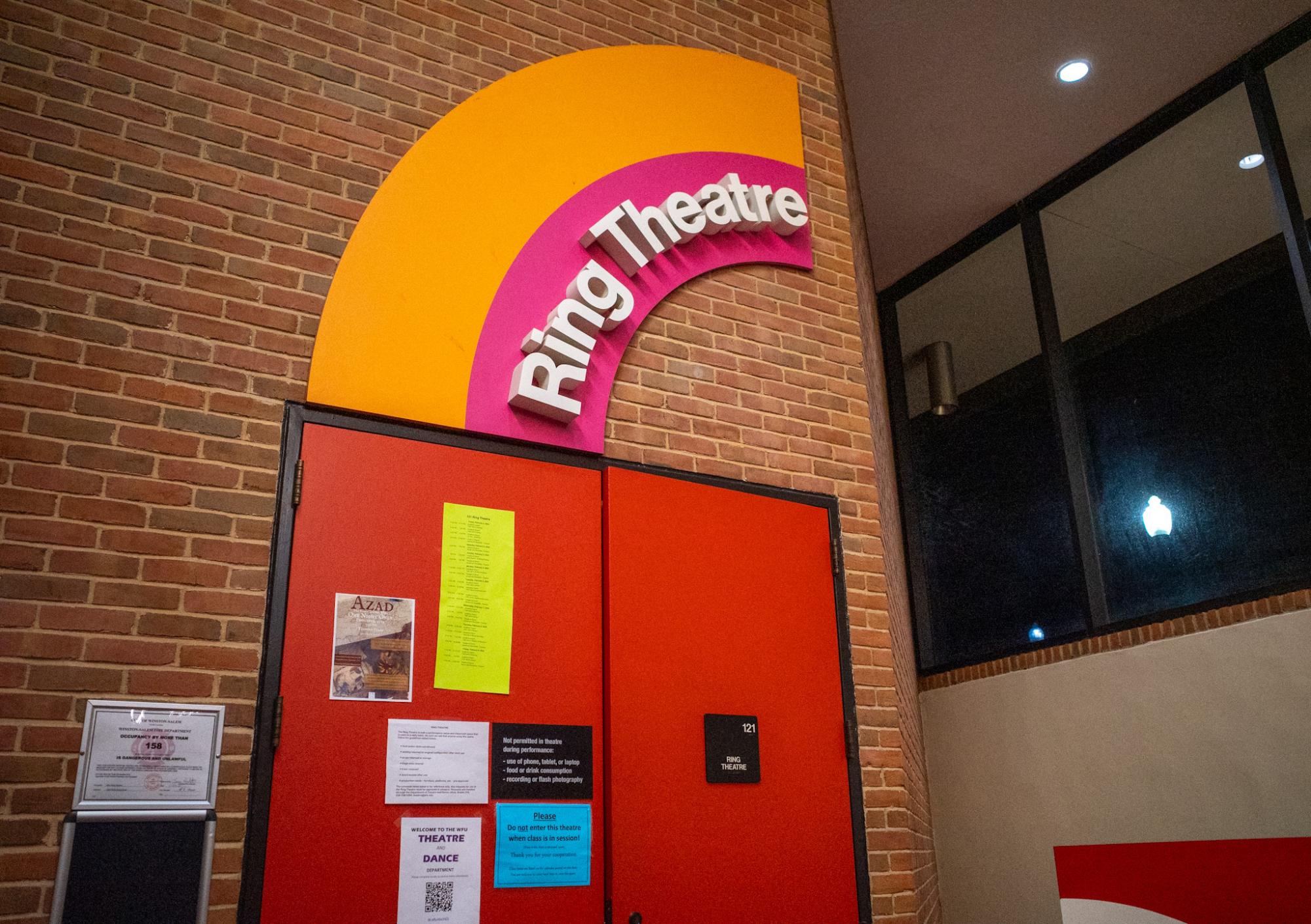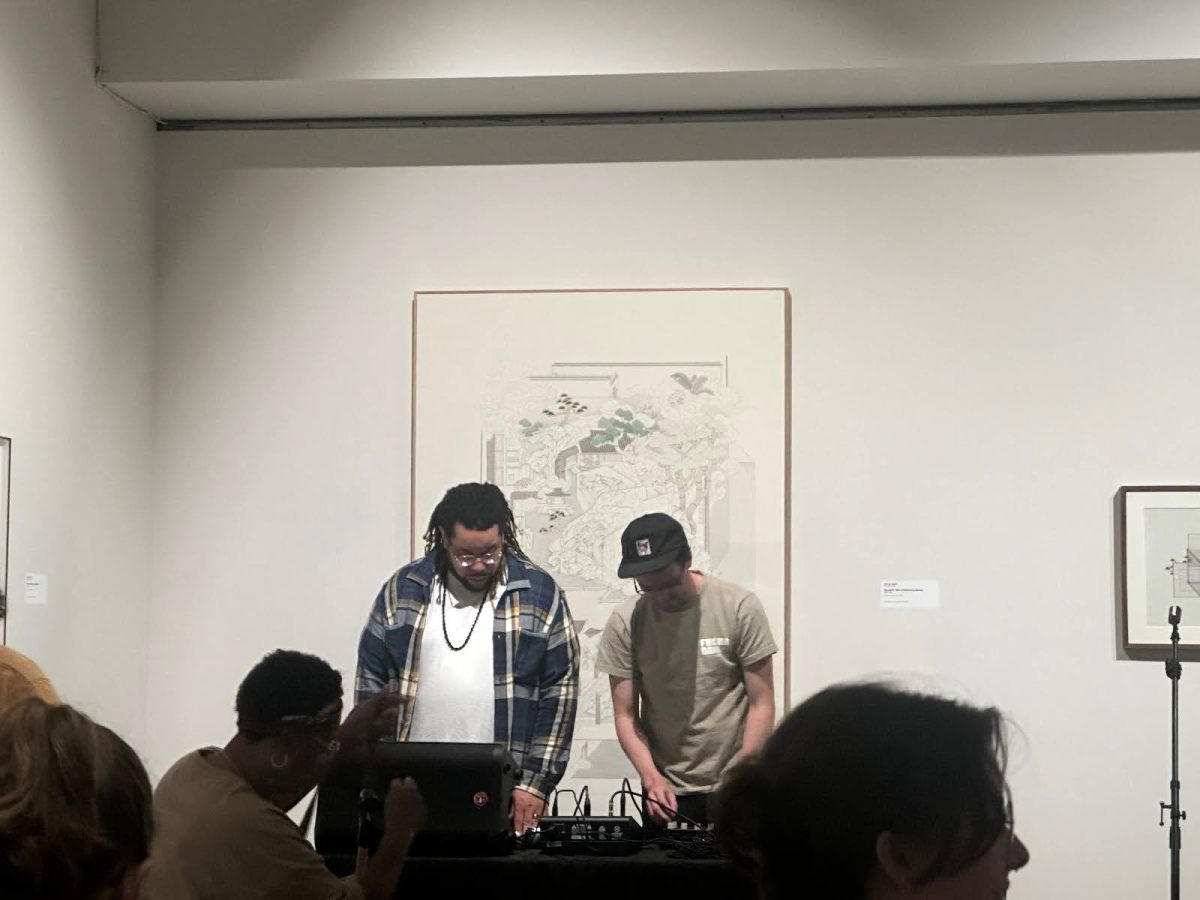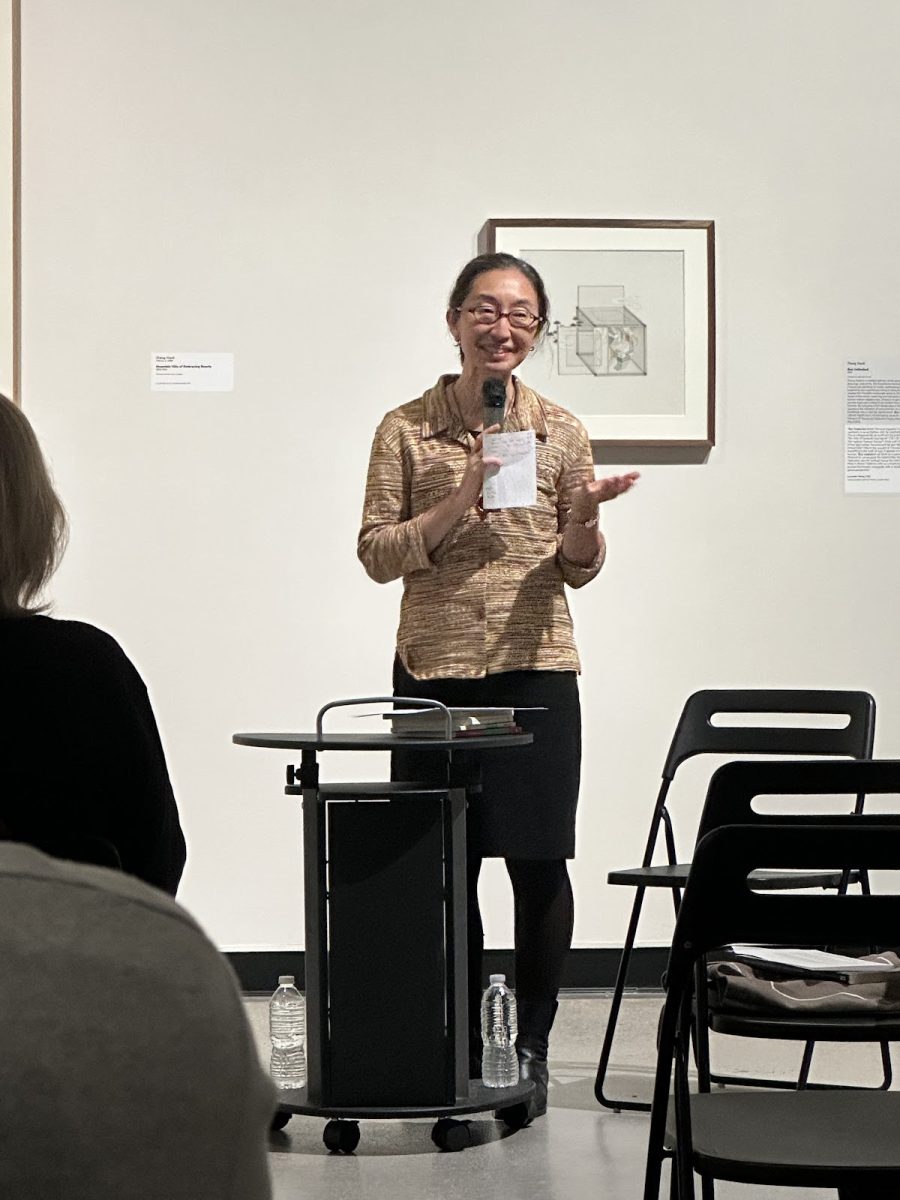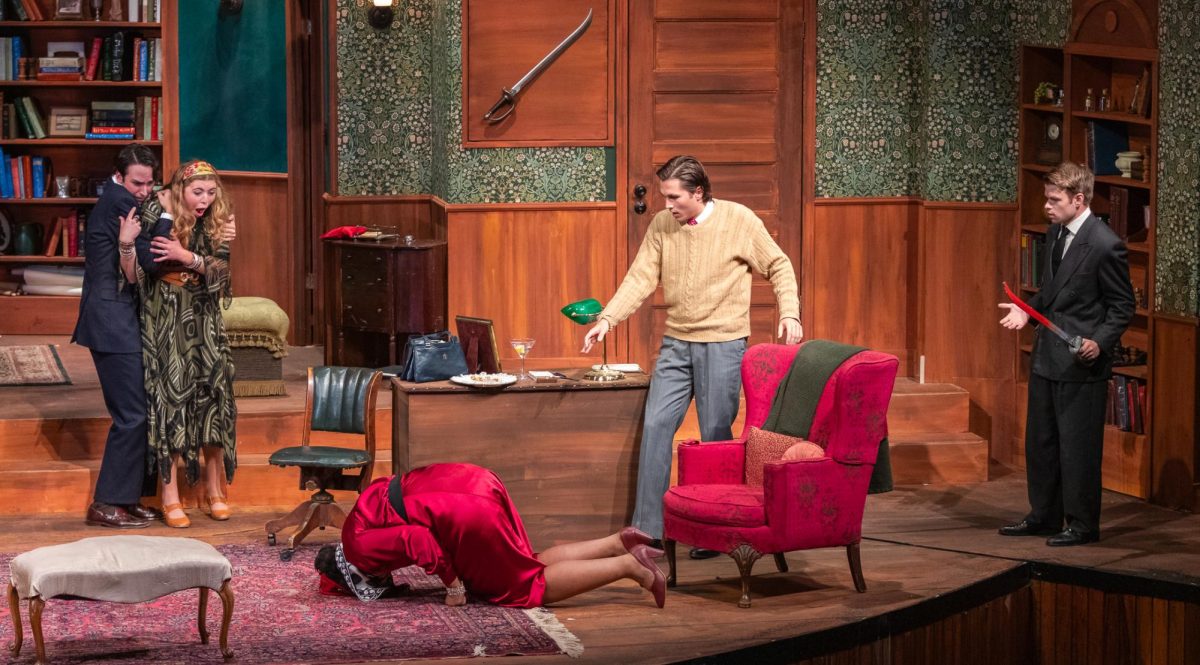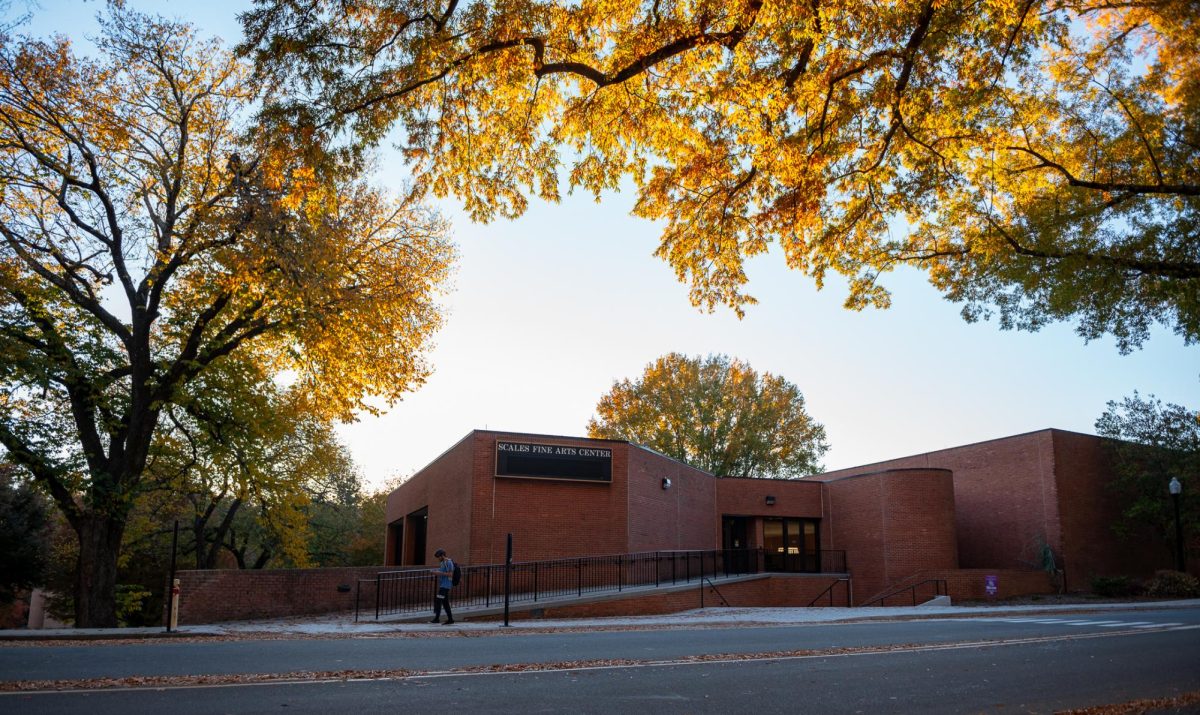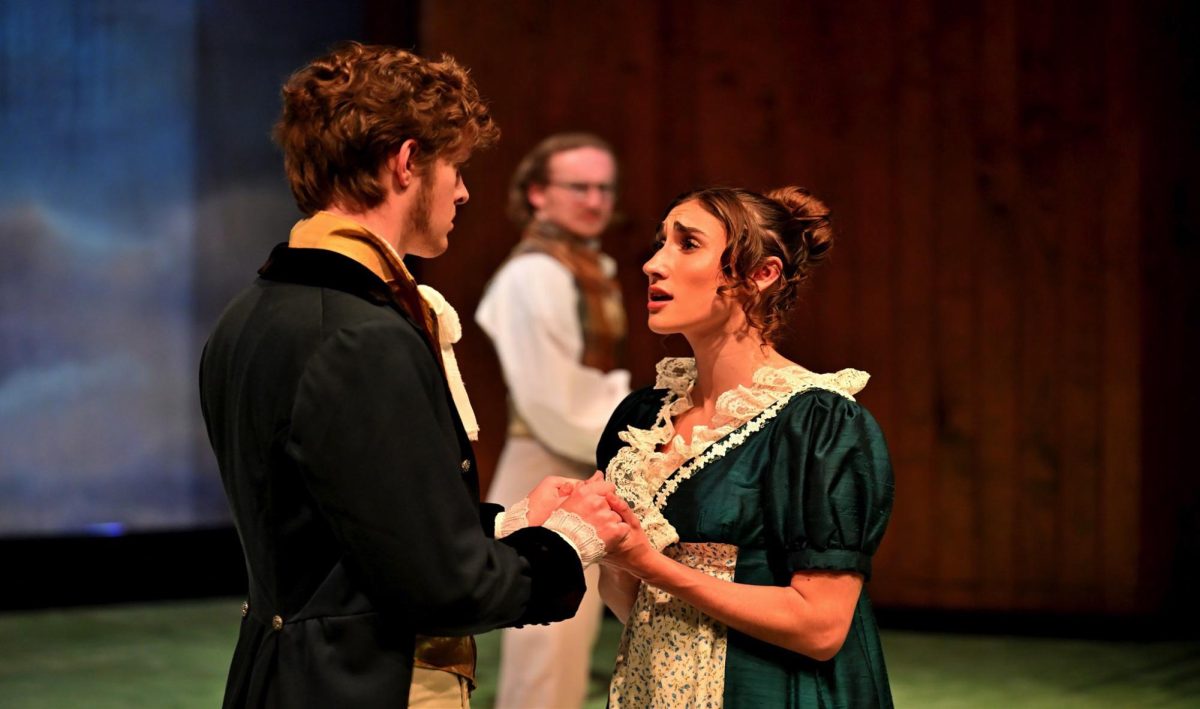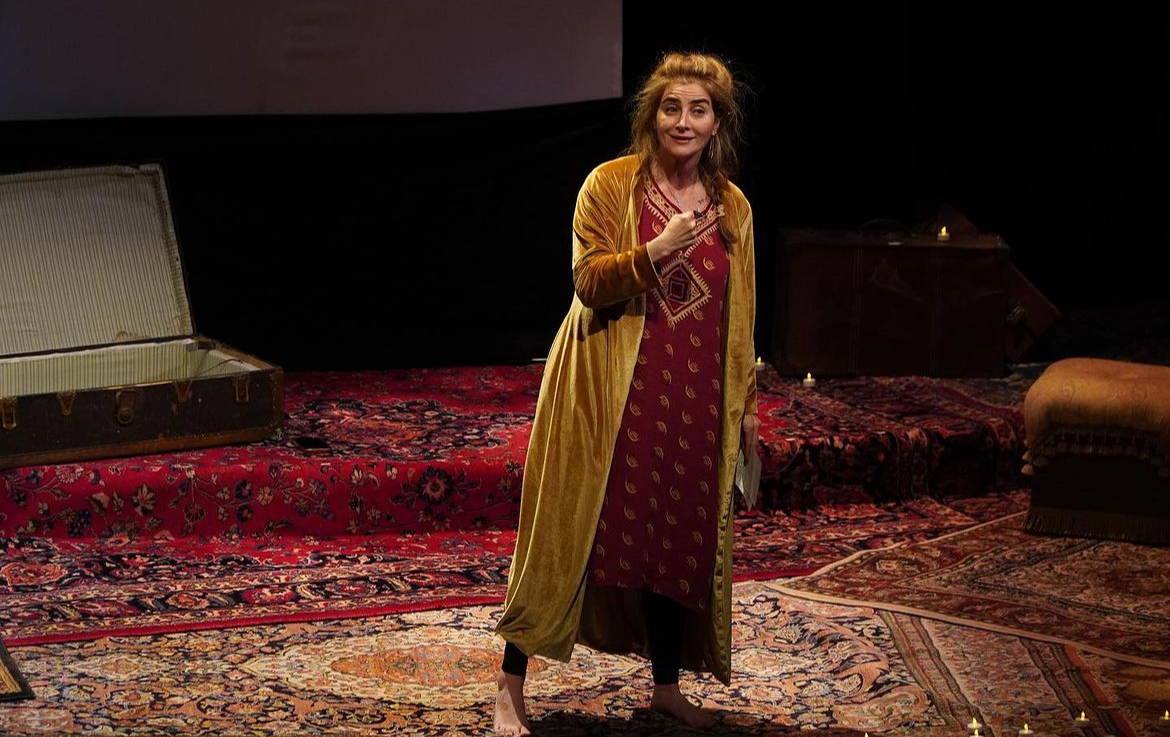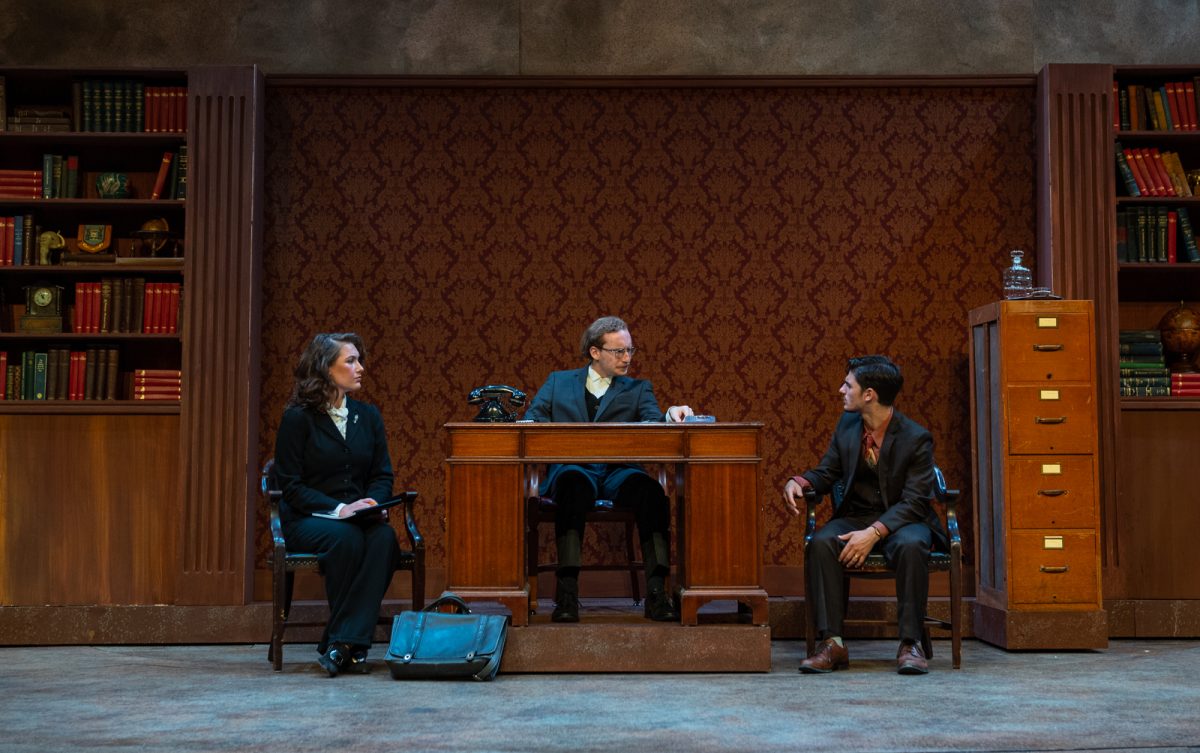Since it was established in 1942, Wake Forest’s Department of Theatre and Dance, based out of the Scales Fine Arts Center, has been the center of eclectic performing arts programming on campus. Each semester, the department organizes two mainstage productions: one play and one musical.
The productions are open to both Wake Forest students and the local Winston-Salem community. This semester, they have chosen a stage adaptation of “Sense and Sensibility,” a regency-era period piece based on the Jane Austen novel that boasts an intricate set and costume design.
Freshmen Emma Engle and Bennett Haara, who are both involved in the show, shared their perspective on the highly anticipated production. Engle is the hair and makeup designer and Haara plays the role of John Dashwood, the half brother of the play’s two main characters, Elinor and Marianne.
“[The production] does a good job of portraying the intricacies of life in England during this era, particularly its aristocratic high society,” Haara said. “John’s depiction also manages to highlight how the politics and social niceties of the era can be especially cutthroat.”
Huge amounts of work will go into ensuring that Haara’s role paints the most vivid and accurate illustration of this Regency era, which generally refers to the early 19th century in Britain when George IV served as Prince Regent.
“Regency era aristocracy [historically and as depicted by Jane Austen] has so many moving parts and can be particularly vicious and simultaneously so witty,” Haara said.
In order to achieve this, Engle’s job includes research folders and color palettes arranged and compiled through deep dives into the period’s beauty standards. Close attention is being paid to the play’s general ambiance.
“Regency era hair consists of a lot of face framing curls; it’s significantly simpler than the subsequent chignon styling of the Victorian period. Older women will wear bonnets,” Engle said.
Costuming will follow the distinctive fashion trends for the nobility of the Regency era. For women, dresses featuring square necklines were in vogue. Dresses were often made of voile and muslin fabric and featured short puffed sleeves, departing from the elaborate sleeves of the previous century. Key elements of men’s attire will include tailcoats, breeches or trousers, waistcoats, cravats and the iconic top hat.
Engle says that characters will be highly distinctive from one another via hair, makeup and costuming “without compromising the authenticity of the period” and encourages the audience to critically observe these details.
“[For makeup] we’re going very soft; the younger girls will have a peachier and nude palette, while the mature women and women that elicit darker feminine energy will don hues of deep red,” Engle said.
There is a certain nostalgia, as well — an aspect of revival and modernization that works together uniquely in the period piece. In particular, Regency era works are increasingly resurging in mainstream media. According to Engle, the classic value of the play will be a big draw to audiences. The experience will likely bridge the gap between “Sense and Sensibility” and the popular Netflix series Bridgerton, making this a highly anticipated performance for viewers and actors alike.
“Although these things may have changed their shape a bit, there might be a shift in how certain narratives are conveyed comparable to modern stories, and the conflicts and relationships that play into this setting can feel so removed from contemporary life and culture,” Haara said. “Yet there is a staunch relatability and wit that permeates the production, making it a highly formative experience.”
The production will take place in the Ring Theatre, where the stage floor has been painted with an ornate gilding that reflects the robustness of the baroque period and evokes imagery of French rocaille motifs.
“[The Ring] is a more intimate space in the lower Scales Fine Arts Center,” Engle said. “You’re closer to the actors and closer to the stage. There’s frequent movement up and down the aisles to invite the audience into the scene, which I think is highly intentional for this performance.”
Wake Forest student body’s engagement has been strong in previous semesters, drawing crowds for Agatha Christie’s “Witness For The Prosecution” and Ally Sheedy’s adaptation of “Turning 15 On The Road To Freedom.” Engle and Haara hope for continued interest and engagement from fellow Wake Forest students in the arts, no matter their academic background.
“This is a really exciting show,” Engle said. “I truly hope a lot of Wake Forest students come out and see it. The cast is stacked; the sets are gorgeous. From the set design down to the minute details, the show will be absolutely stunning.”

